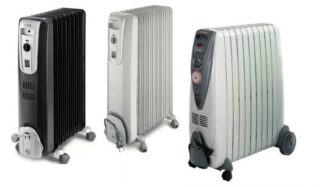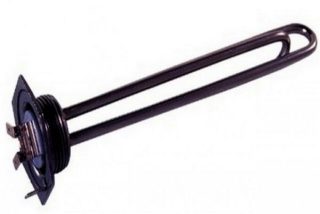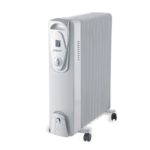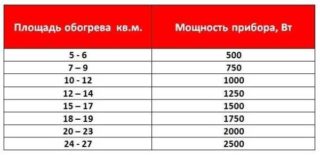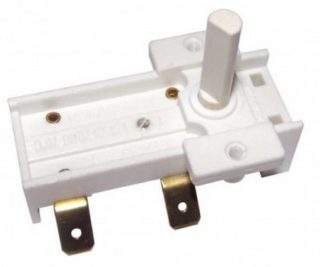Electrical appliances for heating homes, cottages, utility rooms vary in principles of operation and characteristics. A powerful and easy-to-use oil electric heater has positive qualities that make it popular with buyers. Choosing a heater of this type, pay attention to technical characteristics, advantages and disadvantages.
Device purpose
Oil-filled electric radiators are designed for primary and secondary heating.
As the main source of heat, the devices are used in small buildings: cabins, security cars, outbuildings. Round-the-clock heating of private houses in this way is economically unprofitable.
Oil convectors are included in cold summer nights, in autumn and late spring.
Devices help the main heating on particularly frosty winter days. Radiators are installed in children's rooms, offices of administrative buildings, and other rooms.
Operating principle
Electric oil heating radiator by the principle of heat transfer refers to convectors.
Air, heating up from the walls of the device, rises up. According to the laws of physics, cold flows are pushed down. Convection occurs. Then the process is repeated until the temperature in the room rises to the set value. After that, the device automatically turns off. Re-activation occurs after cooling the case with cooled air.
Design features
All types of heaters are built according to a single functional scheme.
The composition includes:
- sealed metal container;
- tubular electric heater (hereinafter - TEN);
- control panel, on which the toggle switches and knobs for adjusting operating modes are displayed;
- emergency shutdown sensor when overheating;
- butter;
- power connection wires;
- fittings for installation on the floor or hanging on the wall.
When the supply voltage is applied, the heating element begins to heat up, which transfers heat to the intermediate coolant. Most often, transformer oil is used, which:
- protects internal parts from corrosion;
- does not boil, releasing oxygen, like water;
- does not conduct electric current to the housing during the destruction of the heater.
For ease of use, oil heaters are equipped with wheels for moving on the floor and devices for winding excess wire.
Types of devices
Depending on the type of housing, convectors can be panel or sectional.
Due to the larger surface area, sectional heaters give better heat to the air, but at the same time it is more difficult to manufacture and more expensive. The flat body is better suited for wall mounting.
Depending on the method and installation location, floor, wall and baseboard types are distinguished.
For quick heating, part of the oil heaters are equipped with fans that pump heated air from the housing into the room.
Mechanical or electronic thermostats are responsible for maintaining the selected temperature. In the first case, electrical contacts are installed on the bimetallic plates, through which the heater is connected. When heated, the plates change their configuration and the contacts “diverge”, turning off the power. After cooling, the petals take their initial (working) form - the contacts close, heating resumes.The operating mode of the mechanical thermostat is changed only manually.
- Wall
- Baseboard
- Floor
Electronic controllers can work as timers, they are programmed for a day or a week. An external sensor located in any part of the room can be connected to the device. The device will turn on (turn off) when the air temperature in a given place changes.
Regardless of the type of heaters, all models are equipped with an emergency shutdown sensor during overheating, which happens when the thermal relay contacts “stick”.
When buying, they prefer oil coolers with a rollover sensor - the high temperature of the metal body will not spoil the flooring.
Specifications
To perform the tasks assigned to the heater, the following are considered important:
- Power. Characteristics for household appliances are in the range of 900–2500 watts. On average, for heating 10 m2 of area (20 m3 of volume), a device per 1 kW is needed. The value depends on the quality of the insulation of the building, the number of doors and windows. The supply voltage is 220 V.
- The number of sections or the housing area of the panel version. The more sections, the more intense convection. Among home models, there are heaters with the number of elements from 4 to 11.
- The number of operating modes - the more they are, the easier it is to set the desired temperature range. For mechanical thermostats, 1-3 switch positions are considered the norm, electronic ones allow you to adjust the temperature with an accuracy of 1 ° C.
- Built-in fan. It does not increase the power of the device, but accelerates the circulation of air and heat transfer in the room.
- Mass. The parameter is important for ease of movement.
- Additional functions - humidifier, ionizer, built-in timer.
Consideration of all parameters is important when choosing a specific model.
Benefits and Limitations
Among the advantages of an oil radiator with a fan are:
- electrical safety - the heater is inside a reliable housing, access to open electrical parts is limited, when the heating element is destroyed, the dielectric properties of the oil will not allow the voltage to reach the parts accessible to touch;
- fire safety - the thermostat and emergency shutdown sensor minimize the possibility of heating external elements above 60–80 ° C;
- service life of 10 years and above - the oil inside the housing prevents corrosion;
- maintainability - spare parts are unified and always on sale, self-replacement of failed parts is available to most people;
- low temperature of the device, which does not lead to the appearance of a burning smell, since the dust does not burn;
- preservation of oxygen, which does not burn out, because the heating element is built into the body and does not come in contact with air, like most infrared heaters;
- power of the device, which is higher than that of classical monolithic convectors;
- energy savings due to the presence of a thermostat.
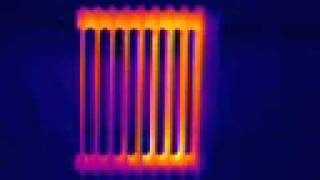
The disadvantages include thermal inertia - the device goes into operating mode for a long time (1-1.5 hours), compared with infrared types of “stoves”, which begin to heat surrounding objects immediately after switching on.
The oil heater cools longer during emergency power outages, which can be especially important for small rooms - gatekeepers, wagons, etc.
A large mass is both an advantage and a disadvantage. The device can be difficult to deliver to the installation site, and then the movement occurs on wheels. A massive appliance, on the other hand, retains heat longer.
The device is dangerous for small children - sharp edges can cause injury when dropped.
Security measures
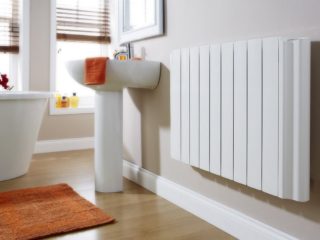
When buying, it is important to verify the quality of the device by requesting certificates of conformity from the seller. Their absence directly indicates a poor quality product.
During operation, it is prohibited:
- allow contact between the heated case and the power cord;
- use when repairing wires and plugs that are not designed for the consumed load;
- use extension cords with cables of insufficient cross-section - extra plug-socket contacts increase resistance, there are frequent cases of short circuits;
- plug in the device with the protective cover removed;
- leave the device unattended, especially in rooms where children and animals can be - the device can tip over, cut off (snack) the power cord;
- place oil heaters in rooms with high humidity, install devices on an earthen floor without a dielectric rug;
- turn on the heater in a horizontal or inclined position;
- place the device closer than 50 cm from walls and furniture;
- store products in the open air, as well as in the open air.
The plug from the outlet is disconnected only after the thermostat is switched to the “off” position. Under load, manipulations are prohibited.
Frequently Asked Questions
Can the device explode
In the vast majority of cases, heaters use transformer oil, whose flash point is about 130 degrees. The flash occurs only in the presence of air, it is in the body in an amount of 10-15% of the volume.
The oil reaches critical temperatures when two malfunctioning devices occur simultaneously:
- Thermostat contacts are stuck
- The emergency shutdown sensor has failed.
It is forbidden to leave any heaters turned on without supervision.
Is it possible to dry things on the heater
The temperature of the case when fully heated can reach 60–80 degrees.
Items of clothing, towels may be damaged or lose their attractive appearance. Often left fabric things burn to the surface, the heater coating spoils, the remaining traces are difficult to eliminate.
Shelter from things complicates the movement of convection flows, which leads to increased heating of the body. The device will start turning off faster and less likely to turn on. This mode will lead to lower air temperature in the room.
Why cracks when working
If clicks are heard during operation and crackling is heard, this indicates various malfunctions or may be the normal mode of operation. When a malfunction is detected, pay attention to the duration of extraneous sounds.
If during assembly at the factory water got into the case along with oil, crackling will be heard until the heater enters the operating mode, having heated up to 60–70 degrees. The water in the tank will evaporate, going into a gaseous state, the crack will stop. A similar phenomenon can be observed when water enters the oil in a preheated pan. The malfunction does not require intervention if the sound stops 5-15 minutes after switching on.
When moving the radiator or dropping it, the oil may mix with air. Once plugged in, air is released and the noise stops by itself.
A cracking sound from the controls indicates a malfunction in the thermostat. Bimetal plates often change configuration; there is a constant opening-closing of contacts, which emit clicks. Repair of the oil heater in this case consists in replacing the faulty thermostat with a new one.
If the crack does not stop after entering the operating mode, it is necessary to repair the oil heater in a specialized workshop.
How much electricity is consumed
The maximum power of any model of oil heater is indicated in the instructions or product passport.
Most heaters consume from 900 to 2500 W / h. Multiplying the resulting figure by the number of hours of operation, they will approximately find out the maximum amount of electricity consumed.
It should be borne in mind that due to the thermostat, the heating element is turned on from 8 to 12 hours a day. For example, a two-kilowatt heater works for about 12 hours a day and consumes about 24 kW of electricity during this time.
The exact indicators depend on what mode the thermostat is set to, what is the temperature of the air in the room, the quality of thermal insulation of the walls.
Do it yourself repair
All malfunctions, except for the destruction and depressurization of the case, can be easily eliminated on their own - no special skills and equipment for repair will be required.
Frequently encountered malfunctions and methods for their elimination are collected in a table.
| Malfunction | External sign | Possible reason | What to do |
|
The appliance does not heat up
|
There is no light indication | Lack of voltage and damaged the integrity of the power cord |
Eliminate or wait for power
|
|
Light indication is
|
Check the integrity of the toggle switch |
Replace with a working one.
|
|
| Thermostat does not work | Replace | ||
| Wire break in electrical circuit | Eliminate | ||
| Faulty TEN | Replace |
To be able to carry out manipulations to identify malfunctions, remove the cover that protects the controls. On different models, protective screens are mounted on screws or plastic latches. To remove, inspect the fastening mechanism, unscrew the fasteners or use a screwdriver to push the tabs of the latches.
Before disconnecting the wires from the thermostat or the heater, it is recommended to photograph or draw a diagram in color - this will help during assembly after troubleshooting.
Unscrew the heater with a plumbing wrench. When reassembling, the threaded connection is sealed with linen winding and sealant, if the design does not provide rubber or silicone gaskets. If these are installed, the newly purchased ones are used when installing the heater.
Oil is poured into the tank at 75-80% of the volume, since it will expand by 5-7% when heated to 90 ° C. If there is no empty space, the heater body will tear apart along the weld joints.
Reliable manufacturers
Oil heaters are in the assortment of most brands that produce thermal products.
Timberk, Pollaris, Dellongi, and Electrolux are distinguished from the products represented on the Russian market by product quality.
Choosing a specific model, pay attention to power, design, additional features of the heater. Be sure to take into account the opinions of customers, which can always be found on special consumer forums, retailers and on the sites of large retail chains.
Universal oil heaters, with the right choice, competent operation and strict adherence to safety measures, serve for a long time and without fail.
